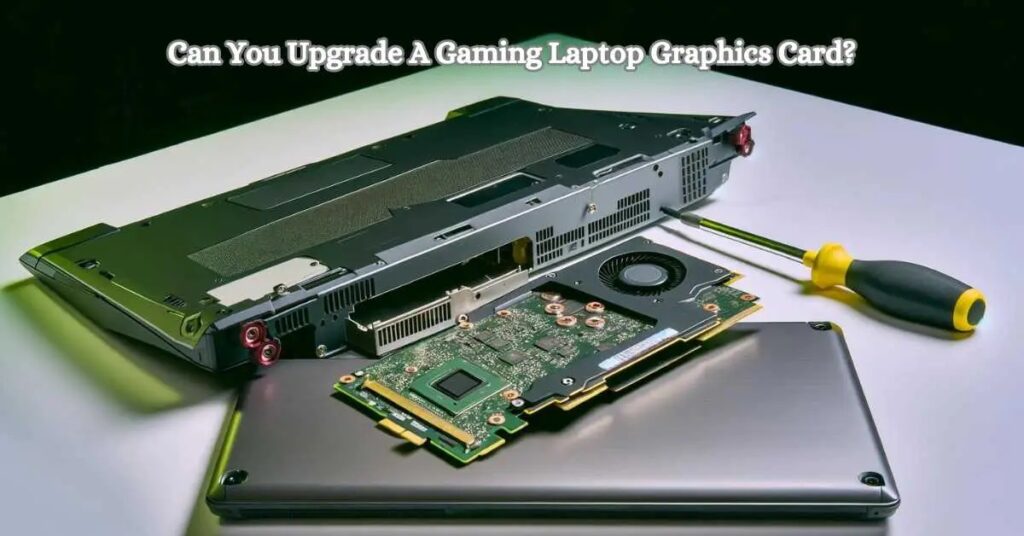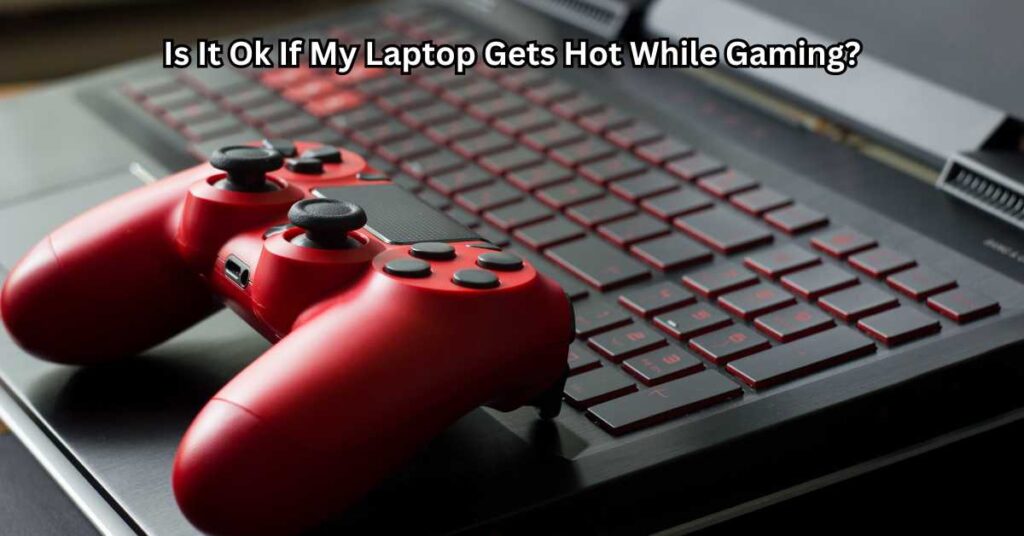The gaming laptop market is a constantly evolving landscape, where innovation and cutting-edge technology set the pace. In 2025, the quest for the ultimate gaming experience continues to drive advancements in processing power, graphics capabilities, and overall machine efficiency. As new games increasingly demand higher specs, staying abreast of the latest features and technologies in gaming laptops becomes crucial for both casual and hardcore gamers. Gaming Laptop Buying Guide: What to Look for in 2025
Keeping up-to-date with these developments not only ensures an immersive gaming experience but also guarantees compatibility with future game releases. This year, key features such as enhanced cooling systems, high refresh rate displays, and robust GPUs define the top contenders in the gaming laptop arena. When choosing a gaming laptop, primary considerations should include the CPU and GPU performance, the type and speed of storage—preferably NVMe SSDs for quicker load times—and sufficient RAM for multitasking between gaming and other computing needs.
In summary, whether you’re looking to upgrade or enter the world of gaming laptops, understanding the landscape of 2025 is essential to making an informed decision that balances performance, budget, and future-proofing.
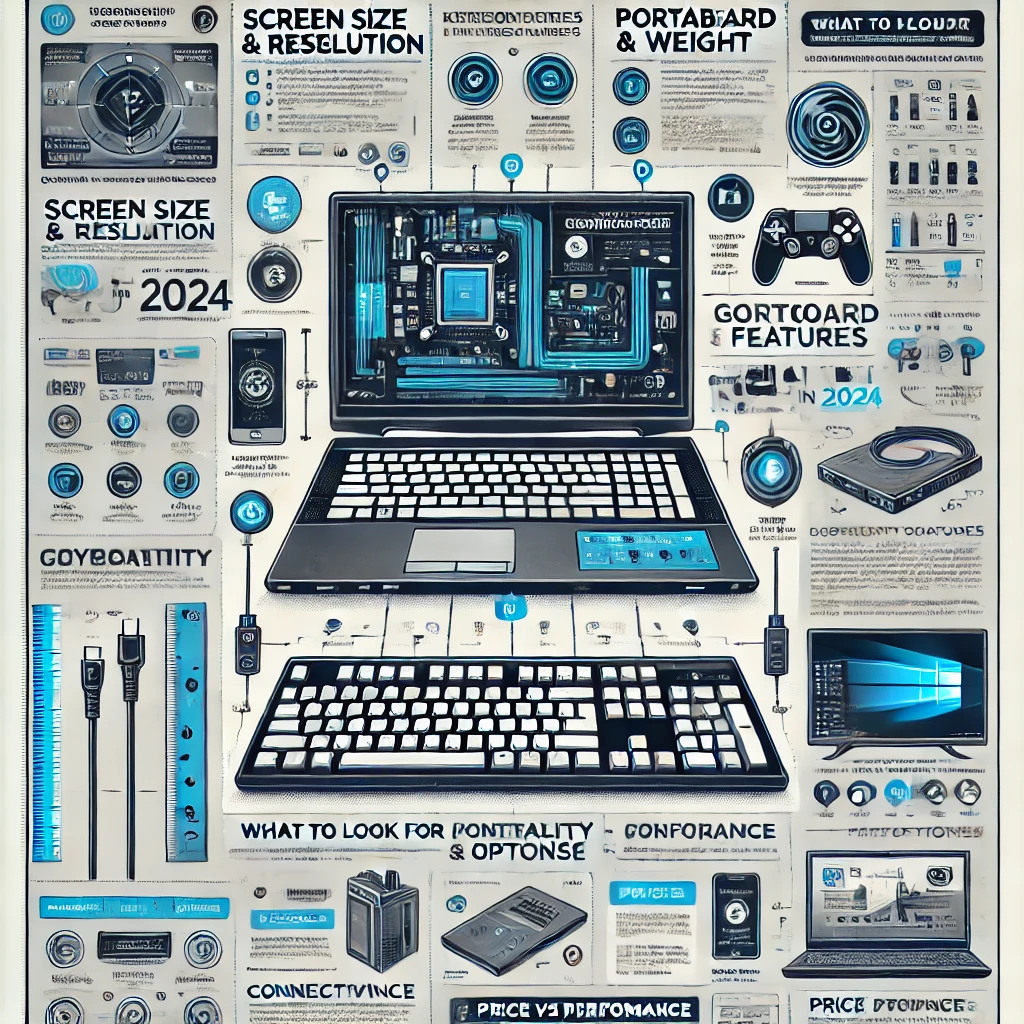
Understanding the Core Components
When selecting a gaming laptop for 2025, the core components—CPU, GPU, RAM, and storage—are fundamental to achieving optimal performance. Here’s how to choose the best options:
1. Processors (CPUs): The CPU acts as the brain of your laptop, handling computations and determining how smoothly your games run. The latest CPUs come with multiple cores and threads, enhancing multitasking and gaming performance. For gaming laptops, look for at least a quad-core processor, but six or eight cores could offer better future-proofing. High clock speeds improve game load times and responsiveness, making a balanced combination of cores, threads, and clock speeds essential for a seamless gaming experience.
2. Graphics Cards (GPUs): The GPU is crucial for rendering graphics and delivering high frame rates. Recent advancements in GPUs have focused on increasing efficiency and power to handle demanding games. VRAM (Video RAM) is particularly important; it stores texture and image files for quick access. In 2025, consider a GPU with at least 6GB of VRAM, though 8GB or more is ideal for newer, graphically intense games.
3. Memory (RAM): RAM plays a significant role in how quickly your system can access data and perform tasks. For gaming laptops in 2025, 16GB of RAM is the recommended starting point, ensuring enough capacity for gaming and multitasking. The speed of the RAM, measured in MHz, along with timings, can also impact performance, with faster RAM providing better frame rates and smoother gameplay.
4. Storage Solutions: When it comes to storage, SSDs are preferred over HDDs due to their faster read and write speeds, which translate to quicker game loading and less waiting time. NVMe SSDs, in particular, offer even faster speeds than traditional SATA SSDs, making them a superior choice for gamers looking to maximize performance and reduce load times.
By carefully selecting these core components, you can ensure that your gaming laptop remains competitive and capable of handling the latest games with ease.
Display and Visuals
1. Screen Size and Resolution
When choosing a gaming laptop, the screen size and resolution are pivotal for an immersive gaming experience. Smaller screens, typically around 13-14 inches, offer greater portability but might compromise the gaming experience due to limited display area. On the other hand, 15 to 17-inch screens, preferred by most gamers, provide a good balance between visibility and portability. For those who don’t travel as much with their laptop, 18-inch screens offer expansive views but at the cost of heavier weight and less battery efficiency.
The optimal resolution for gaming laptops in 2025 remains 1920×1080 (Full HD), as it provides excellent visual clarity while conserving battery life more effectively than higher resolutions like 2560×1440 (QHD) or 3840×2160 (4K). While QHD and 4K resolutions deliver sharper images and more detailed visuals, they require more power, thus reducing battery life and demanding more from the GPU.
2. Refresh Rates and Response Times
Refresh rate is a key factor in a gaming laptop’s display, indicating how many times the screen updates its image per second. A higher refresh rate (120Hz or more) makes gameplay appear smoother and decreases input lag, essential for competitive gaming. It’s important to match the laptop’s GPU capabilities with the screen’s refresh rate to fully utilize its potential without unnecessary battery drain.
Response time measures how quickly a pixel can change from black to white (or from one shade of gray to another). Lower response times (3ms or less) are ideal as they reduce ghosting and blurring, crucial during fast-paced games where every millisecond counts.
3. Panel Types
The type of panel used in a gaming laptop affects its color reproduction, viewing angles, and overall visual performance. IPS (In-Plane Switching) panels offer the best color accuracy and viewing angles, making them suitable for both gaming and professional color work. TN (Twisted Nematic) panels offer faster response times and are less expensive, but they suffer from poorer color accuracy and viewing angles. OLED screens, while more expensive, provide superior contrast ratios and true blacks, offering a visually stunning gaming experience.
For gamers seeking the best overall visual quality, IPS panels are often the best compromise between performance, color accuracy, and viewing angles, making them a top choice for gaming laptops in 2025.
Build Quality and Design
1. Keyboard and Input
When selecting a gaming laptop for 2025, the keyboard is more than just an input device; it’s an integral part of the gaming experience. High-quality gaming keyboards are distinguished by their key travel and actuation force, which determine how deep the keys need to be pressed and how much pressure is required. This is crucial for gamers needing precise and responsive controls. Additionally, the presence of macro keys allows gamers to customize and execute complex commands with a single keystroke, enhancing gameplay in strategy and MMORPG games. Modern gaming laptops also often feature RGB lighting, not only for aesthetics but also to assist in low-light conditions, ensuring the keys are always visible.
2. Chassis Material and Durability
The durability of a gaming laptop largely depends on the materials used in its chassis construction. Common materials include plastic, aluminum, and magnesium alloy, each offering different benefits and drawbacks. Plastic is lightweight and cost-effective but may not provide the best protection against heat and physical damage. Aluminum, while heavier, is favored for its robustness and superior heat dissipation, crucial for maintaining performance during intense gaming sessions. Magnesium alloy is an excellent middle ground, offering a lighter weight solution without compromising on the structural integrity of the laptop. The choice of material directly impacts the laptop’s longevity, resilience to wear and tear, and overall stability.
3. Portability and Weight
Gaming laptops have historically been bulky, but recent advancements have seen a shift towards more portable designs without sacrificing performance. For gamers who frequently travel or attend LAN parties, considering the weight and size of a gaming laptop is essential. Lightweight models are more comfortable to carry and set up anywhere. However, it’s important to balance portability with the inclusion of high-performance components and sufficient cooling solutions, as these can add to the weight. The ideal gaming laptop offers a harmonious blend of power and portability, ensuring top-notch performance wherever you go.
Section 4: Battery Life and Connectivity
1. Battery Performance
Battery life remains a significant consideration when purchasing a gaming laptop, especially as mobile gaming continues to demand more power. Historically, gaming laptops have not been known for their longevity on a single charge, particularly under heavy use. In 2025, gamers can expect anywhere from 4 to 8 hours of battery life under moderate gaming conditions, depending on the model and configuration. However, for extended gaming sessions, it’s advisable to stay plugged in to maintain peak performance and protect battery health.
To optimize battery performance, consider adjusting your laptop’s power settings. Most gaming laptops offer a “balanced” mode that optimizes battery life by slightly reducing performance when not plugged in. Additionally, dimming the screen brightness, turning off unnecessary background applications, and reducing the keyboard backlight can extend your playtime away from a power outlet.
2. Connectivity Options
Connectivity is crucial for a seamless gaming experience, especially in multiplayer settings or when using external devices. Essential ports on a gaming laptop in 2025 should include multiple USB 3.0 ports, at least one HDMI port for external displays, an Ethernet jack for stable wired internet connections, and possibly a Thunderbolt port for high-speed data transfer and external graphics solutions.
The importance of advanced wireless connectivity such as Wi-Fi 6 cannot be overstated. Wi-Fi 6 offers improved latency, faster data rates, and more reliable performance in crowded networks, which is essential for online gaming without lags. Additionally, Bluetooth features continue to evolve, with the latest standards providing faster pairing, increased range, and better energy efficiency, making it easier to connect peripherals like mice, keyboards, and headsets without sacrificing performance or battery life.
Incorporating these connectivity features ensures that gaming laptops remain versatile and future-proof, not just for gaming but also for everyday tasks and professional use.
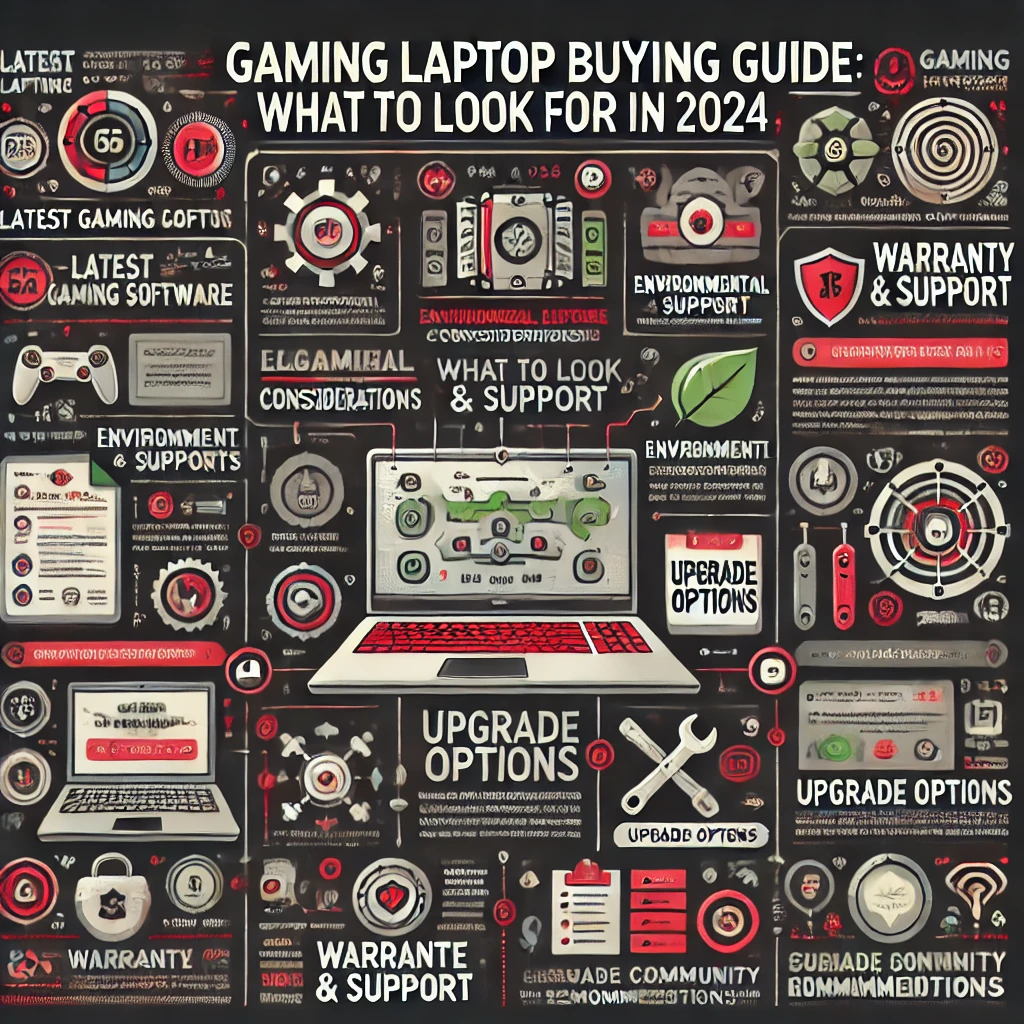
Cooling Systems
1. Cooling Technology
As gaming laptops become more powerful, the heat generated by their components also increases. In 2025, advances in cooling technology have become a critical factor in the design and functionality of gaming laptops. Manufacturers have now incorporated more sophisticated cooling mechanisms, including liquid cooling solutions and multi-fan systems that work in tandem to disperse heat more efficiently. These innovations not only extend the lifespan of the laptop by keeping critical components like the CPU and GPU at optimal temperatures but also prevent thermal throttling, which can significantly impair gaming performance. Effective cooling ensures that the laptop maintains high performance during intense gaming sessions, allowing the hardware to run at peak efficiency without overheating.
2. Noise Levels
Noise production can be a significant distraction, especially during intense gaming sessions where concentration is key. Modern gaming laptops in 2025 have addressed this issue with quieter, more efficient cooling fans and designs that minimize sound output. Assessing a laptop’s noise levels before purchasing is crucial as it can affect your gaming experience. Tips for managing and reducing noise include using a cooling pad to help augment the laptop’s own cooling system, keeping the laptop on a hard, flat surface to ensure proper ventilation, and cleaning the fans regularly to prevent dust buildup, which can lead to increased noise and reduced cooling efficiency.
By prioritizing advanced cooling technologies and low noise levels, gamers can enjoy prolonged gaming sessions without compromise, making these features paramount when choosing the best gaming laptop in 2025.
Additional Features to Consider
1. Customization and Upgradeability
When choosing a gaming laptop in 2025, customization and upgradeability are more than just buzzwords; they are crucial for future-proofing your investment. The ability to upgrade components such as RAM, storage, and sometimes even the GPU, can significantly extend the lifespan of your device. As games become more resource-intensive, having the option to install additional memory or a higher-capacity SSD means your laptop can meet evolving demands without the need for a full replacement. This not only saves money in the long run but also ensures your machine can handle new software and games at their optimal performance levels.
Furthermore, customization goes beyond hardware. Many gaming laptops offer customizable key mapping and macro configurations, which are vital for both casual and competitive gamers. This level of personalization allows users to tailor their setups to their gaming preferences, enhancing both the functionality and the enjoyment of their gaming experience.
2. Software and Extra Features
The software suite that comes pre-installed on your gaming laptop can greatly influence your user experience. Often, manufacturers include a mix of bloatware and useful tools; distinguishing between the two is key. Bloatware can slow down your system and clutter your storage, whereas useful tools like system performance monitors, fan control applications, and customizable lighting software can enhance your gaming experience.
Exclusive gaming features such as RGB lighting and dedicated game modes not only add to the aesthetic appeal of your laptop but can also provide practical benefits. RGB lighting, for example, is not just for show; it can be useful for gaming in low-light conditions. Game modes optimize system resources to prioritize gaming performance, ensuring that you’re getting the best possible frame rates and load times. These features, while not essential, contribute to a more immersive and tailored gaming experience, making them worthwhile considerations when selecting your next gaming laptop.
Budget Considerations
1. Price Ranges and What to Expect
When shopping for a gaming laptop in 2025, understanding what features align with different price points can guide you in making an informed decision. Generally, budget gaming laptops, often priced under $1,000, will equip you with basic gaming necessities like a mid-range GPU, quad-core CPU, 8GB of RAM, and a standard 1080p display. These are suitable for casual gaming with moderate settings.
Mid-range models, which can cost between $1,000 and $2,000, typically offer more powerful GPUs, such as the latest from NVIDIA or AMD, hexa-core processors, 16GB of RAM, and faster SSD storage solutions. Many also feature higher refresh rate screens, up to 144Hz, which are crucial for a smoother visual experience in fast-paced games.
For those who can extend their budget over $2,000, the high-end gaming laptops provide top-tier GPUs and CPUs with additional perks like 4K displays, superior build quality, advanced cooling systems, and aesthetic enhancements such as customizable RGB lighting. These premium models are designed to handle intensive gaming sessions and will likely include future-proof features to accommodate upcoming game releases.
2. Cost vs. Performance
Deciding how much to spend on a gaming laptop should be primarily influenced by your specific gaming needs and performance expectations. Casual gamers might find that a budget to mid-range laptop suffices, especially if they predominantly play less demanding games. However, competitive gamers or those who also need their laptops for high-performance tasks like video editing or 3D modeling might consider investing in high-end models.
The key is to balance cost with performance: identify the features that are most important to you, and determine if paying extra for advanced specifications offers a proportional improvement in performance. If the added cost doesn’t match the expected performance gain, it might be wise to save that money or allocate it toward peripherals like an external monitor or a high-quality gaming mouse. This approach ensures you get the best value for your investment without overpaying for unnecessary features.
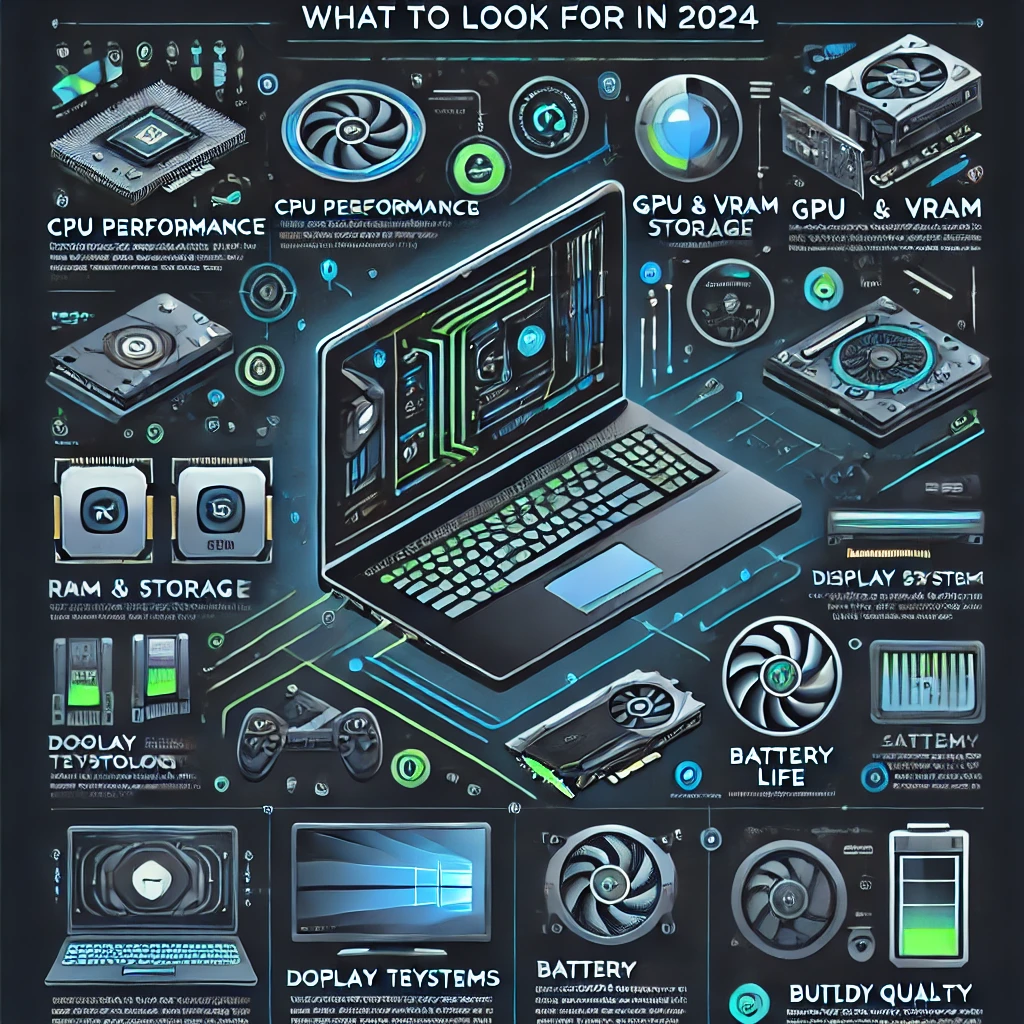
Conclusion
As we wrap up our comprehensive guide on choosing the perfect gaming laptop for 2025, let’s recap the crucial points to consider. Key components like the latest CPUs and GPUs, ample RAM, and speedy SSD storage are foundational for optimal gaming performance. Additionally, factors such as high refresh rates, quick response times, and robust cooling systems significantly enhance the gaming experience. Considering the build quality, battery life, and the laptop’s portability will ensure that your gaming rig meets all your needs, from intense gaming sessions to everyday productivity tasks.
When selecting your next gaming laptop, weigh each component’s performance against your specific gaming preferences and budget. Remember, the best gaming laptops in 2025 balance power with practicality, ensuring you get the most value for your investment. Always prioritize models that offer upgrade flexibility to extend the lifespan of your device.
Lastly, the technology landscape is always evolving, making it essential to stay informed. Before making a purchase, consult the latest reviews and benchmarks to see how prospective models perform under current gaming demands. By staying well-informed, you ensure that your investment will stand the test of time, keeping you competitive in the gaming world and efficient in your daily tasks.
(FAQs) for Gaming Laptop Buying Guide: What to Look for in 2025
FAQ 1: What are the most important features to look for in a gaming laptop for 2025?
Answer: The most crucial features to consider are the processor (CPU), graphics card (GPU), amount of RAM, type and capacity of storage, display quality including refresh rate, and the laptop’s cooling system. Ensuring these components are up-to-date will guarantee better performance and longevity.
FAQ 2: How much RAM do I really need for a gaming laptop in 2025?
Answer: For gaming in 2025, it’s recommended to have at least 16GB of RAM. However, if you plan to use the laptop for streaming or high-end game settings, 32GB can offer a more seamless experience.
FAQ 3: Are SSDs better than HDDs for gaming laptops?
Answer: Yes, SSDs offer significantly faster read and write speeds compared to HDDs, which means quicker load times, faster game installations, and generally snappier performance overall. For gaming laptops, an NVMe SSD is the best choice due to its superior speed.
FAQ 4: What screen specifications are most important for gaming laptops?
Answer: The key screen specifications for gaming laptops are resolution, refresh rate, and response time. A minimum of 1080p resolution is recommended, with refresh rates ideally 144Hz or higher for smooth gameplay. Look for a low response time (around 3ms or less) to avoid ghosting and blurring.
FAQ 5: Can gaming laptops be good for work and school too?
Answer: Absolutely! Gaming laptops are equipped with powerful processors and ample RAM, making them excellent for multitasking and demanding applications like video editing, programming, and graphic design, which are common in work and academic environments.

